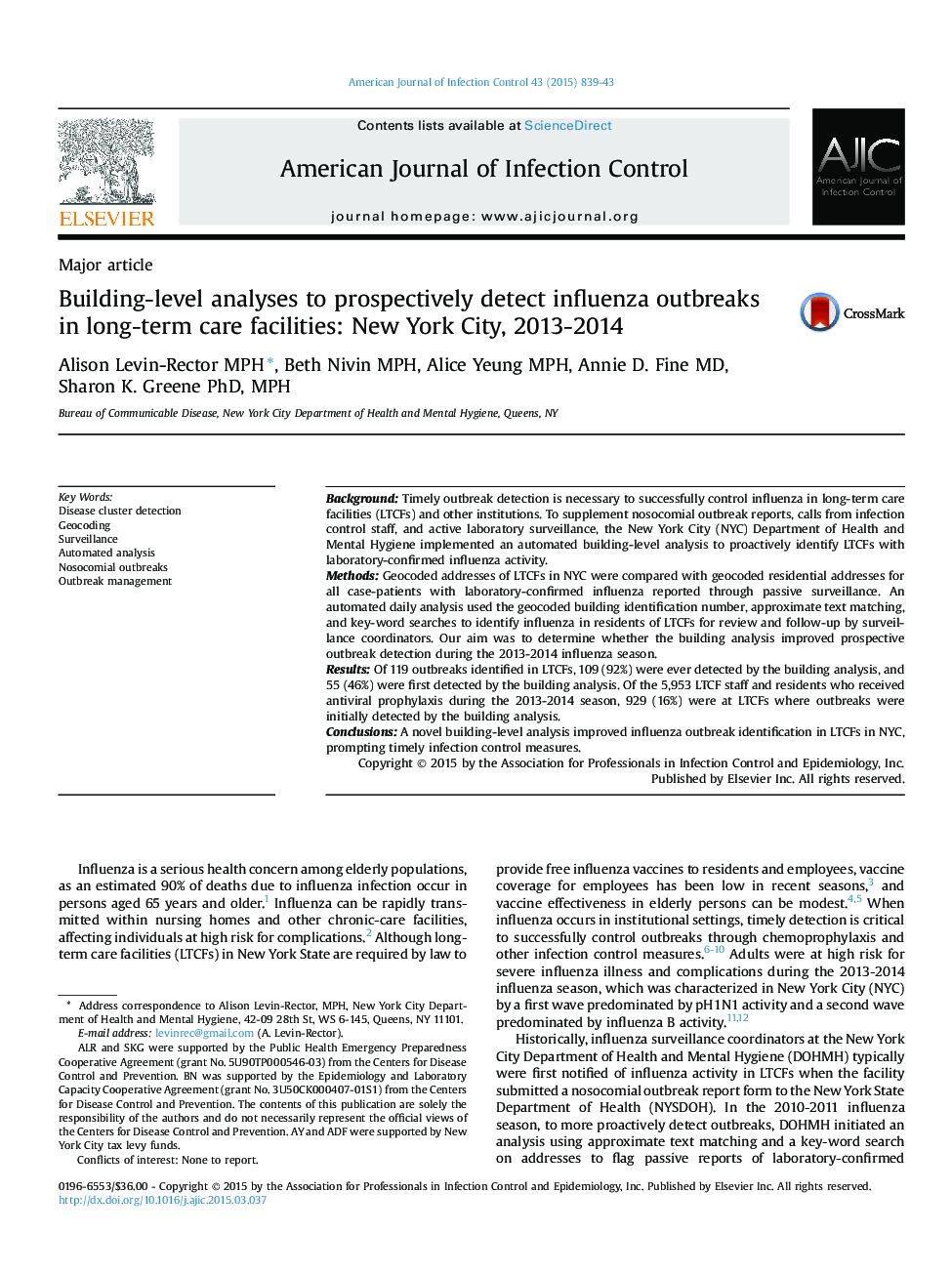| Article ID | Journal | Published Year | Pages | File Type |
|---|---|---|---|---|
| 5866613 | American Journal of Infection Control | 2015 | 5 Pages |
â¢Rapid detection is needed to limit influenza in long-term care facilities (LTCFs).â¢We developed a daily analysis to more rapidly detect influenza outbreaks in LTCFs.â¢Geocoded address fields were used to match case-patient addresses with LTCFs.â¢Automated building analyses were the first detection method for 55 LTCF outbreaks.â¢This analysis improved outbreak detection during the 2013-14 influenza season.
BackgroundTimely outbreak detection is necessary to successfully control influenza in long-term care facilities (LTCFs) and other institutions. To supplement nosocomial outbreak reports, calls from infection control staff, and active laboratory surveillance, the New York City (NYC) Department of Health and Mental Hygiene implemented an automated building-level analysis to proactively identify LTCFs with laboratory-confirmed influenza activity.MethodsGeocoded addresses of LTCFs in NYC were compared with geocoded residential addresses for all case-patients with laboratory-confirmed influenza reported through passive surveillance. An automated daily analysis used the geocoded building identification number, approximate text matching, and key-word searches to identify influenza in residents of LTCFs for review and follow-up by surveillance coordinators. Our aim was to determine whether the building analysis improved prospective outbreak detection during the 2013-2014 influenza season.ResultsOf 119 outbreaks identified in LTCFs, 109 (92%) were ever detected by the building analysis, and 55 (46%) were first detected by the building analysis. Of the 5,953 LTCF staff and residents who received antiviral prophylaxis during the 2013-2014 season, 929 (16%) were at LTCFs where outbreaks were initially detected by the building analysis.ConclusionsA novel building-level analysis improved influenza outbreak identification in LTCFs in NYC, prompting timely infection control measures.
